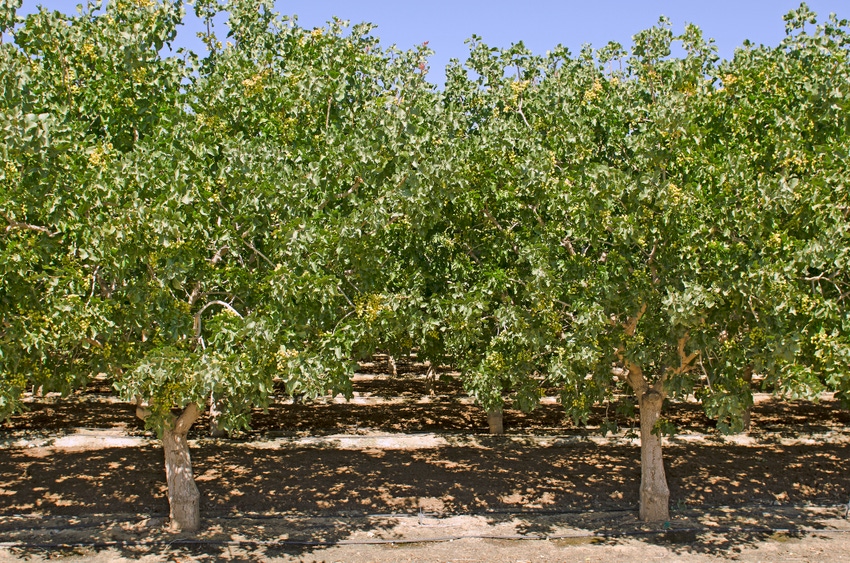
Pistachio growers should be more concerned with warm wintertime temperatures than with chill accumulations when it comes to estimating crop yields.
“It’s not that important,” says University of California (UC) Cooperative Extension farm advisor Craig Kallsen about winter chill’s effect on pistachio production. “What hurts is when it is warm during the winter.”
Kallsen says air temperatures during the fall and winter are a better component for predicting crop yield.
Researchers and growers in the past have set targets for the number of chill hours required to ensure a good crop. Studies by UC California researchers had determined that 500 hours below 45 degrees F. is needed to achieve 50 percent bloom in the Peters variety, and 750 hours below 45 degrees F. are needed for the Kerman variety to achieve 44 percent bloom.
When these minimums are not achieved, the result can be delayed or irregular bloom and poor pollen production which in the end can reduce fruit set plus increase blanks and un-split nuts.
Kallsen’s research in Kern County Kerman pistachio production suggest that weather variables and previous crop yield are the most important factors to predict the current crop yield.
Four variables which appear to have the most value in predicting yields include:
1 – The previous year’s yield in pounds per acre
2 - Hourly air temperature accumulations above 65 degrees F. from Nov. 15 to Feb. 15
3 - Hourly air temperatures accumulations greater than or equal to 45 degrees F. and less than 60 degrees F.
4 - Hourly air temperature accumulations above 80 degrees F. from March 20 to April 25.
Kallsen says accumulated chill hours from Nov. 15 to Feb. 15 appear to be curvilinear to Kerman pistachio yield. In the three orchard studies, high chill accumulations were associated with decreased yields.
Of the four variables, Kallsen said numbers 1, 2, and 4 were negatively correlated with yield. When values for these variables were high the yield was low.
For example, if there were many hours of temperatures above 65 degrees in the fall and winter then yields would be reduced. If there were high accumulations of hours with temperatures above 80 degrees during the spring bloom period then yields would be further reduced. More accumulated hours in the third variable positively related to yield.
Chill portions or chill hour accumulation variables were not as significant as the four listed.
Warm winter temperatures are believed to have two effects on pistachio production: off-setting the chill hours accumulation, and elevating bud respiration rate to consume a limited amount of stored carbohydrates needed for spring growth.
Kallsen used yield data from a Kern County pistachio farming operation to begin the statistical process that might help answer if air temperature variables can be useful in predicting future yields in Kerman orchards. The research objective was to correlate the yield of those orchards with air temperature records available from nearby CIMIS stations.
Classes of temperature-related variables tested in Kallsen’s model included chill portions totaled from Sept. 1 to Feb. 28; chill hour accumulations during fall and winter; heat unit accumulations; heat hour accumulations in the fall and winter months; and heat hours during bloom.
Kallsen says growers who want to input their data into his regression equation to predict Kerman yield can do so by clicking online.
For the best results, orchards should have a temperature data recorder nearby that takes hourly measurements throughout the day.
In general, he says growers who have entered their old data from previous years into the model have found that it performed fair-to-good in predicting yield, except for in the 2015 crop failure year.
Kallsen now uses the term “adequate fall and winter rest” instead of “chilling” since it is less suggestive.
About the Author(s)
You May Also Like




